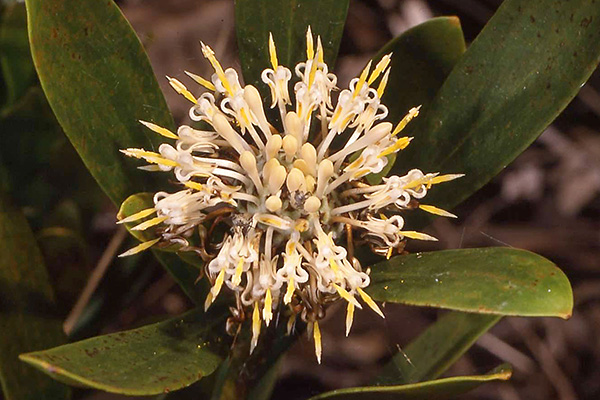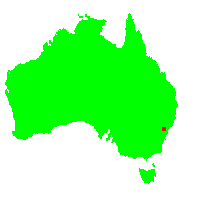General Description:
Isopogon is a genus of around 35 species, all occurring only in Australia. They are found in the southern half of the continent in temperate regions. Most are small to medium sized shrubs having flower clusters arranged in globular heads. The fruits are also globular in shape giving rise to the common name of “drumsticks”. Some are also called “coneflowers” although this name is more usual in the related genus Petrophile.
Isopogon fletcheri is a small shrub up to about 1-1.5 metres in height. The leaves are leathery in texture with an elongated elliptical shape to about 80 mm long. The cream coloured flowers occur in spring, conspicuously displayed on the ends of the branches. The flower clusters are around 35 mm in diameter and are followed by the spherical (barrel-shaped) seed pods which remain on the plant for an indefinite period.
This is an attractive species which has been introduced into cultivation over the past few years. It seems to be very slow growing and prefers a moist, well drained, sandy to sandy loam soil in full sun or light shade. The species develops a lignotuber and should tolerate severe pruning in the unlikely event that this is needed.
Propagation from seed should be successful but due to the rareity of the species seed in not available. Cuttings of hardened, current season’s growth strike successfully but are slow to form roots.
* EPBC Act = Environment Protection and Biodiversity Conservation Act 1999;
ROTAP = Rare or Threatened Australian Plants (Briggs and Leigh, 1988)
For further information refer the Australian Plants at Risk page

Isopogon fletcheri
Photo: Brian Walters
 Australian Native Plants Society (Australia)
Australian Native Plants Society (Australia)